Brazil’s contribution to the world of gemstones is immeasurable. If you own just a handful of jewelry pieces, you’re almost sure to possess one of the glorious treasures of this remarkable land. We thought we’d lace up our virtual travel boots and embark on a whistle-stop tour of this magnificent country. Along the way we’ll take in the breathtaking scenery, culture and beauty of this unique place, visiting important gemstone mining locations as we go.
Our previous travel features focusing on Madagascar and Sri Lanka highlighted these two exceptional islands because of the sheer number of gemstones they harbored in a relatively small space. The reason Brazil is so enriched with delightful natural stones is quite different – Brazil is vast. For comparison, Madagascar would fit into Brazil around 15 times, while Sri Lanka would fit more than 130 times. At 3,287,956 square miles, only China, the United States, Canada and Russia are bigger, and over 200 million people call the country home. Gemstones are spread far and wide across the entire nation, though there are still areas where gem finds are more concentrated, as we'll see.

(The numbers shown like this [#] throughout this article refer to the locations marked on the map above.)
There is no evidence of any gemstone mining in Brazil before 1573 when incredible quality Emeralds were discovered in the state of Minas Gerais. In the 1690s, gold was found to the east of Belo Horizonte in the same state, joined in 1729 by a significant Diamond discovery to the north. The ensuing gold and Diamond rushes were partially responsible for the rapid growth of the once small village, which today is the sixth largest city in Brazil. By 1760, half the world’s gold was sourced in Brazil. Prospectors have also discovered iron, tin, copper and bauxite over the centuries, and Brazil continues to be a major supplier of these metals. But the mines we’re really interested in are the gemstone bearing ones that are scattered up and down the country.
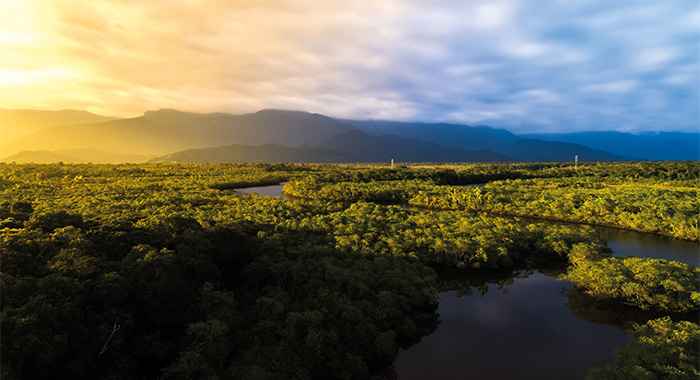
We begin our journey of discovery in the northern state of Para [1], which is Brazil’s 2nd largest state and is over four times larger than the United Kingdom. Para is mostly covered by the enormous Amazon Rainforest. About 60% of Brazil is covered by the Amazon, which also accounts for a third of the globe’s total rainforest coverage. It’s so large, it is responsible for around 20% of the planet’s oxygen. Over 400 indigenous Amerindian tribes live along the banks of the famous river that flows through this vast forest, about 50 of which have never had any contact with the rest of the world. The forest has one of the most diverse ecosystems on the planet, with over 40,000 plant species, 1,300 bird species, over 400 mammal species and over two-and-a-half-million different types of insect. Our starting point is Altamira in the center of the state, which sits on the Xingu River, a tributary of the Amazon which it joins to our north.
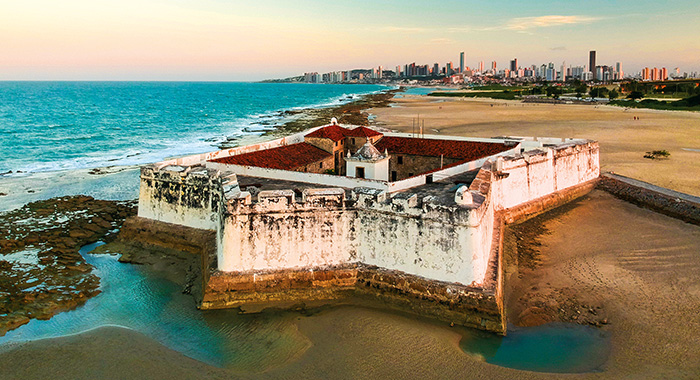
Altamira is surrounded by national parks and protected territories and is also near the junction of two of the only major roads running through this state. As well as being a large producer of rubber, gold is mined here too, along with iron ore and bauxite. But we begin here not only to start our journey in the heart of the rainforest but also because the gemstone Jasper is found in this area. There’s a particular green variation, sometimes sold as Rainforest Jasper, that features banding that looks incredibly similar to the river cutting its way through the canopy of the rainforest from above. The convergence of Mother Nature’s many creations is impeccable sometimes, and Rainforest Jasper is exquisite. It would take months to explore the area thoroughly, and the state capital of Belem (founded 1616) with its mango trees and colonial-era architecture is a must-visit city if you’re ever in this part of the world. But we now follow our gemstone hunting path to the east, down routes 230, 226, and 304, arriving nearly 1,500 miles later at the state capital of Rio Grande do Norte [2], Natal.
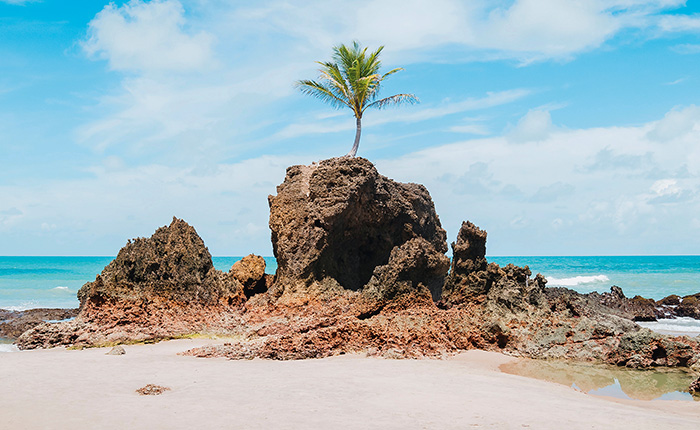
A little more geared towards the tourist than one might expect in this north-east corner of Brazil, Natal is nevertheless a charming, modern city full of color and character. The beaches here, though right on the doorstep of the city in places, are very picturesque and popular for riding beach buggies on. The Portuguese landed here on December 25th 1597, Natal being the Portuguese word for Christmas. The city was begun with the building or a distinctive five-pointed fort that still stands. Forte dos Reis Magos translates as Fort of the Three Wise Men. Rio Grande do Norte is just under half the size of England, and this vibrant, sun-kissed state is, appropriately enough, home to Brazil’s significant deposits of Golden Beryl. Heading a little way south, we cross into the state of Paraiba [3]. This state will forever be famous in the world of gemstones for giving its name to a remarkable variety of Tourmaline that was discovered here in 1989. It was unearthed by gem hunter Heitor Dimas Barbosa after almost a decade of searching, though this scarce gem was never available in high numbers and this original deposit has been all but depleted for quite some time. The stone exhibits bright blue-green hues, not unlike the tropical ocean that washes against the beaches of the state of Paraiba, and the perfect sky which mirrors it from above. The magic addition that created this incredible color variation while the gem was forming is copper. Specimens of original Brazilian Paraiba Tourmaline are among the most sought after gemstones on the planet, though thankfully other deposits have since been found elsewhere in the world, notably in Mozambique, that contain just the right amount of copper to be classified as Paraiba Tourmaline. Other varieties of Tourmaline, which is famously available in every color of the rainbow, are also mined here, as well as high-quality Topaz, in the Sao Jose de Batalha area.
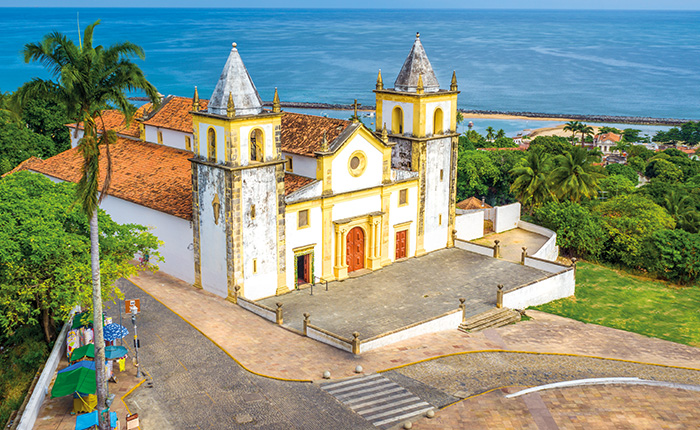
Continuing further south as we get closer to the beat of Brazil’s gemstone heart, we pass into the state of Pernambuco [4], another relatively small state on the same scale as Paraiba and Rio Grande do Norte. The neighboring coastal towns of Recife and Olinda, in the east of the state, were founded in 1537 and 1535 respectively, making them among the oldest settlements of colonial-era Brazil. Recife is more of a modern, bustling city, full of museums detailing both the Portuguese and Dutch origins of this area. Olinda is a quieter, charming city with a culturally historic center. The colorful houses and cobbled streets of the downtown area have been designated a World Heritage site. The carnivals that take place here are world-renowned and are among Brazil’s most prominent. Together they form the biggest conurbation in north-east Brazil, home to over 4 million people, and the beach of Porto de Galinhas (‘Chickens Port’) to the south has been awarded the prestigious status of Brazil’s best beach. Fluorite, Zircon, Spinel and Diopside have all been found in this state, as well as Diamond and many more, which is a sign of things to come as we head further south into the state of Bahia [5]. Leaving Recife on route 232 and heading south-west onto routes 423 and 110, we arrive 430 miles later in Carnaiba.
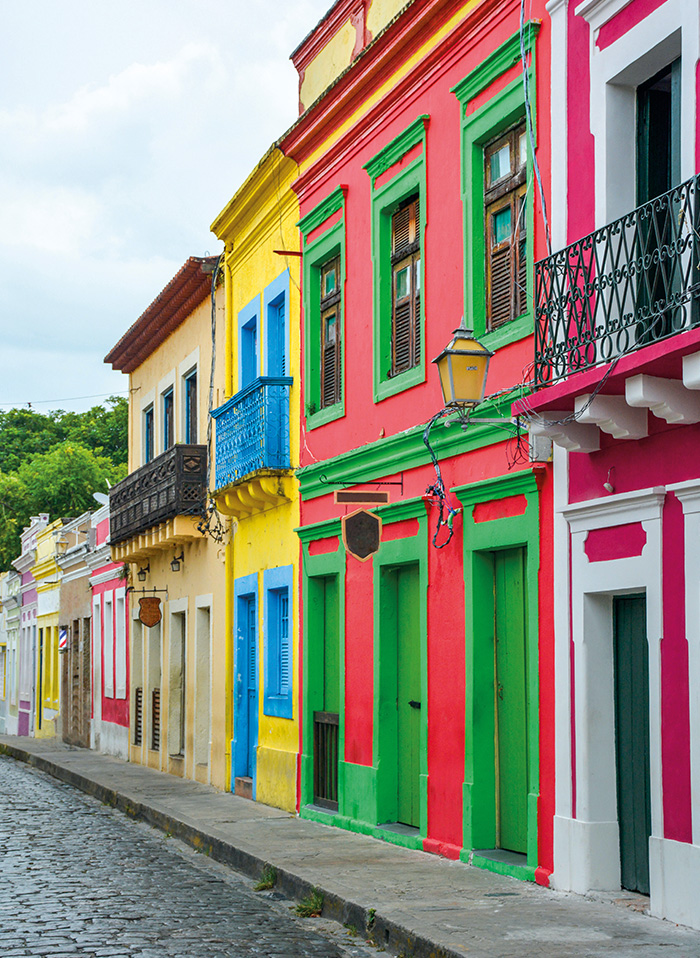
The rich geological seams running beneath this enormous state, which is just a little larger than Spain, give us Apatite, Astraeolite, Sillimanite, Chrysoberyl, Malachite, Tourmaline and Amethyst, among many others. But Bahia is particularly well known for being a source of Emerald, and Carnaiba, in particular, is a fertile area for the mining of this deep green treasure. Emerald was first found here in 1963 and created something of an Emerald rush. Six years later over 6,000 artisanal miners were hunting for deposits of the stone. Carnaiba Emeralds can often be found in usually large sizes, sometimes even over 10 carats. The mines can go as deep as 100 meters underground, with tunnels then fanning out at this depth for as far as 250 meters from the main shaft. Most pieces are extracted still attached to the host rock, and in 2017, a whopping 360kg (794 lb) rock interlaced with high-quality Emerald crystals was discovered in Carnaiba. The 1.2m (4ft) tall rock was estimated to be worth £238 million.
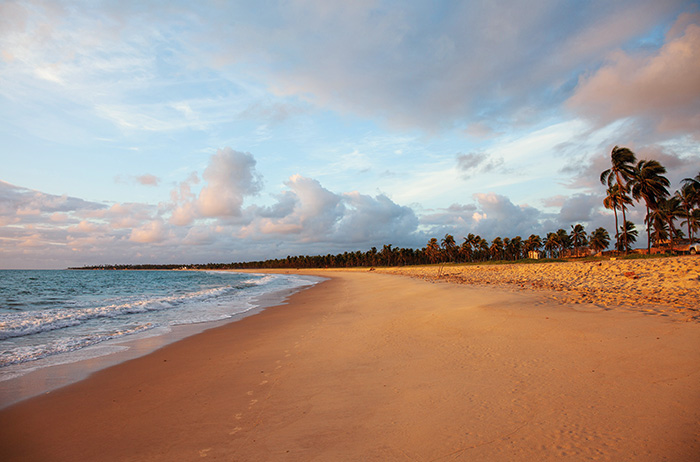
Another of nature’s beautiful green gemstones, Alexandrite, is also sometimes found in the Emerald mines here. Heading south out of Carnaiba on route 116, we take a brief detour to the state capital, Salvador. This city captures the spirit of Brazil perfectly, with its 17th and 18th-century architecture and vibrant colors sitting alongside miles of beautiful tropical coastline. It was founded in 1549 by the Portuguese and was the first capital of Brazil – to this day it is the fourth biggest city in the country. Its carnival celebration has been called ‘the biggest party in the world’.
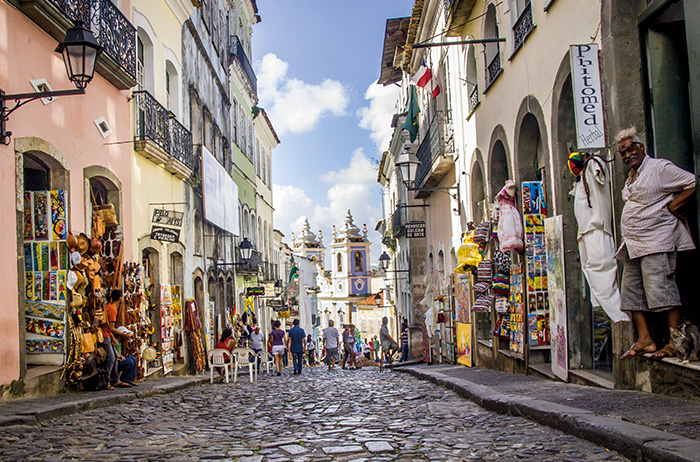
Heading west from here down route 242 takes us through the Chapada Diamantina National Park, an area of outstanding natural beauty. ‘Chapada Diamantina’ translates as ‘Diamond Plateau’ and indeed the fiery gemstone has been found here, along with gold. The rich fauna of the park includes a hummingbird known as the hooded visorbearer, which is endemic to this area. The 340-metre high Fumaca Waterfall was believed to be the highest in the country until recently, when a 353-metre tall fall was found deep in the Amazon. Regardless, the sheer height of this cascading wonder is an arresting sight. Not far from here is Novo Horizonte, the source of Bahia’s other most famous gem, the aptly named Bahia Rutilite. This gorgeous form of Rutilated Quartz features golden needle-like inclusions crisscrossing a beautiful clear stone, where each gem is utterly unique in appearance. The most famous Bahia Rutilite is the five-foot-long centerpiece that now hangs in the atrium of the Gemological Institute of America. Weighing in at almost a million carats, the stunning work of art was crafted over seven years by renowned gemstone artists Glenn Lehrer and Lawrence Stoller. It is simply titled ‘The Bahia’ in honor of the state of its discovery in 1987. Bahia is also known for its cacao and sugar cane plantations.
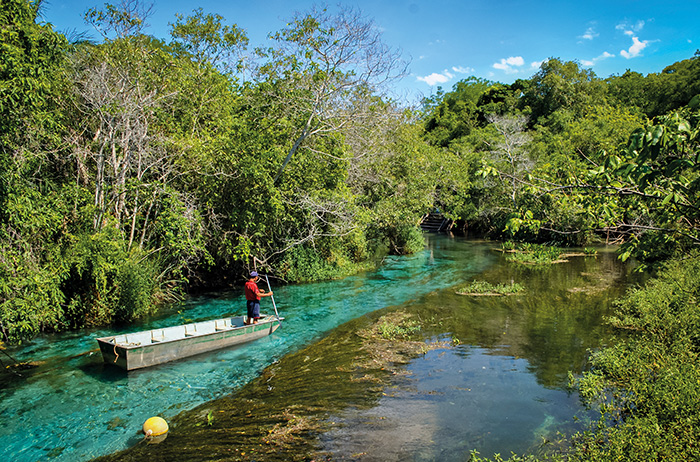
To our west and south-west lie the states of Tocantins [6], Mato Grosso [7] and Mato Grosso do Sul [8], where the namesake gemstones Tocantin Garnet and Mato Grosso Ametrine are sourced. Tocantin Garnet, which is mined near the town of Sao Valerio, is an exceptionally vibrant red hue even for this famously red stone. It is mined in a 150-metre deep open-pit mine. Mato Grosso Ametrine is especially notable for being one of the only occurrences of Ametrine outside of Bolivia, which these states border to their south and west. But we now head south out of Bahia into arguably the most prolific gem-bearing state in Brazil, Minas Gerais [9].
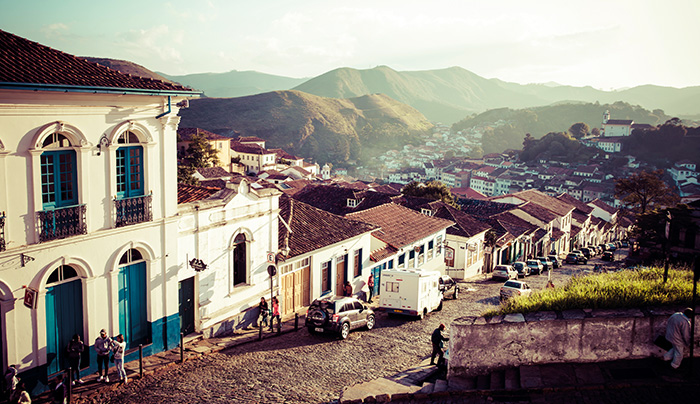
Mining is everything here. The name ‘Minas Gerais’ translates to ‘General Mines’ and the state coat-of-arms features a mining lamp surrounded by mining tools. It is Brazil’s fourth largest state by size and third most populous, behind only the neighboring states of Sao Paolo and Rio de Janeiro, home to their respective titular cities. It is very nearly twice the size of Italy and the gemstones that are mined here read like a roll call of the finest stones ever discovered. Just a few of the lesser-known gemstones found here include Agate, Kyanite, Fluorite, Petalite, Heliodor, Andalusite and Brazilianite. Mining began in the 1700s when Brazil was still a Portuguese colony, and over the intervening centuries both gold and Diamonds have been big exports for the state. Today, coffee and gemstones rank very highly on this list.
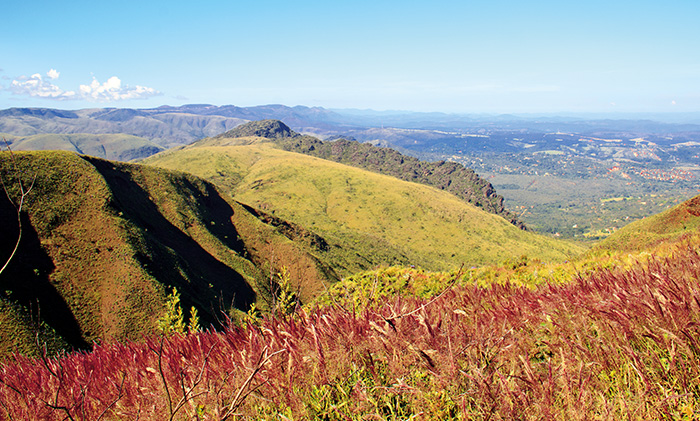
Arriving in the state on route 116 and continuing south on route 259, we arrive in Galileia in the valley of the River Doce. In this valley alone, we source some of our finest gemstones, including fine pink Galileia Morganite from this very town. There are also high-quality Garnets and Iolites to be found in the valley, as well as Lavender and Rutile Quartz and Galileia Amblygonite too. The valley stretches for miles and miles, and hidden away in the region of Sao Jose da Safira (‘Safira’ translating as ‘Sapphire’) lie the Pederneira and Cruzeiro mines, famous for their Tourmaline deposits. Cruzeiro Rubellite, Pederneira Tourmaline, Pederneira Indicolite and Safira Tourmaline all hail from this small area. Of all the Tourmaline gemstones that can be found on our planet, the stones sourced here are among the very finest, in color, clarity and character. They are peerless. As if that wasn’t high praise enough, the area has even been known to turn up the scarce variety of Watermelon Tourmaline from time to time. Leaving this rainbow of delightful hues behind us, we head west from Galileia along routes 474 and 262, towards Belo Horizonte, stopping just shy of the state capital to visit Ouro Preto.
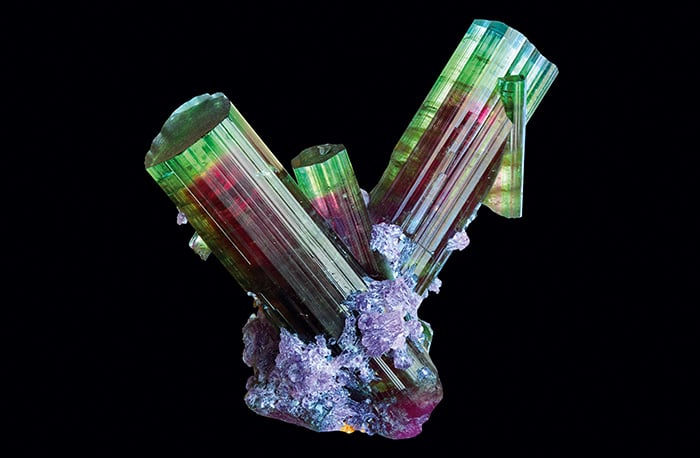
Translating literally as ‘Black Gold’, the hillside settlement of Ouro Preto was once the site of a significant gold rush. Starting in 1695, the rush allowed Ouro Preto to boast the largest population anywhere in the Americas – 110,000 to New York’s 60,000. Today, this World Heritage site is known for its baroque architecture and its churches, of which there are 23. This colonial jewel in the crown features almost no structures built post-1900 and is home to a gemstone and mineral museum too. It is also known to gem connoisseurs for being one of the few places in the world from which Imperial Topaz can be sourced. The distinctive golden yellow color of the collectable stone is an appropriate reminder of the area’s history. We could spend months exploring this remarkable state, exploring the Emerald mines at Itabira and Santa Terezinha, the Heliodor deposits at Xia and the Kunzite mines that produce some of the brightest, clearest examples of the gem. But as our time in Brazil nears its end, we move east into the state of Espirito Santo [10].

Brazil is well known for producing Aquamarine, and the largest faceted Aquamarine in the world was sourced in Pedra Azul, here in Espirito Santo. Known as the Dom Pedro Aquamarine, the finished gem weighs a considerable 10,363 carats. Incidentally, ‘Pedra Azul’ translates as ‘Blue Rock’, and is also the name of a state park and the 1,822 metre (5,978 foot) high rock formation in this area. One of the most elegant types of Aquamarine in the world is named for this state – Espirito Santo Aquamarine. It may not quite reach the sumptuous hue and dazzling rarity of Brazil’s own Santa Maria Aquamarine, but it is considered rarer and more desirable than many of the other Aquamarines available on the market. Heading south from here, down route 101 past the state capital of Vitoria, we cross into the state of Rio de Janeiro [11] and eventually reach the city itself. Already one of the most famous cities in South America, Rio has most certainly risen in stature in the last decade, having hosted both the World Cup final in 2014 and the Olympic Games in 2016, the first South American city to do so. Football is a huge part of Brazilian culture, and the hosting of the World Cup was an important moment for the country. The lust for life and enthusiasm on display in the city makes it a perfect showcase for Brazil. Famous landmarks here include Sugarloaf Mountain, Copacabana and Ipanema beaches, the Christ the Redeemer statue, as well as countless restaurants, museums and places of interest at which to whittle away a pleasant day. Rio was the capital of Brazil from 1763 to 1960 and is the second largest city in Brazil after Sao Paulo, which lies just 270 miles to the west.

We rejoin route 116 for a final time – the road is Brazil’s second longest at 2,790 miles and runs down the entire eastern coast of the country. We pass Sao Paulo, and head onwards to the southernmost state of Rio Grande do Sul [12]. It was here that immigrants from Germany’s gem-cutting center Idar-Oberstein headed in the 18th century to continue their livelihoods when the gem mines started to run dry around their hometown. The state is another jewelry box of treasures, with Santa Maria Aquamarine, Chalcedony, Rio Golden Citrine, Rio Grande Lavender Quartz and, of course, Amethyst. The city of Santa Maria lies near the middle of the state and is home to the world-renowned Aquamarine source. Further north lies the smaller town of Ametista do Sul, where Amethyst mining is such an important part of the community that the local church walls are lined with the gem. The region also produces wine, and it’s not unusual to find Amethyst geodes still in situ in the walls of the vineyard cellars, as they’re sometimes converted from closed down and repurposed Amethyst mines.
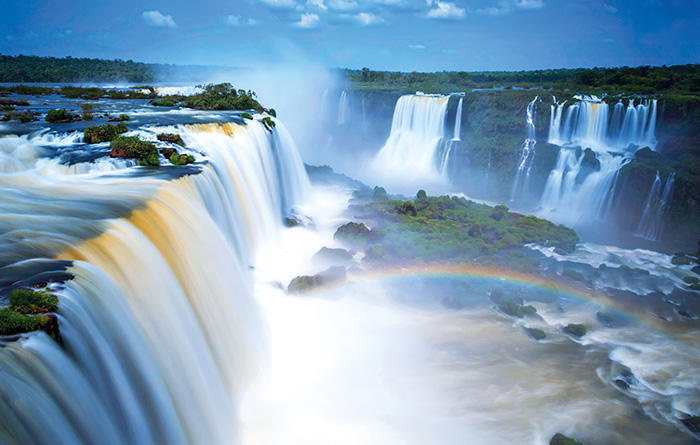
Our brief trip around the gemstones of this remarkable nation is almost at an end. Before we leave, we head back north-west to the spot where Brazil borders both Argentina and Paraguay. Here, the most magnificent spectacle awaits us – Iguazu Falls. This spectacular waterfall is the biggest in the world and marks one of the most astonishing natural sights not only in Brazil but on the planet. The beautiful rainbows floating in the spray against the awesome power of the rushing water perfectly captures the treasure box of different colored gemstones from this breathtaking country – and the infinite majesty of Mother Nature herself.
To discover the gems discussed in this article, click below to start a gemstone journey of your own.
BRAZILIAN GEMSTONES
If you want to keep traveling, click the below destinations for articles similar to this one full of adventure and sparkle.
TRAVEL MADAGASCAR
TRAVEL SRI LANKA

